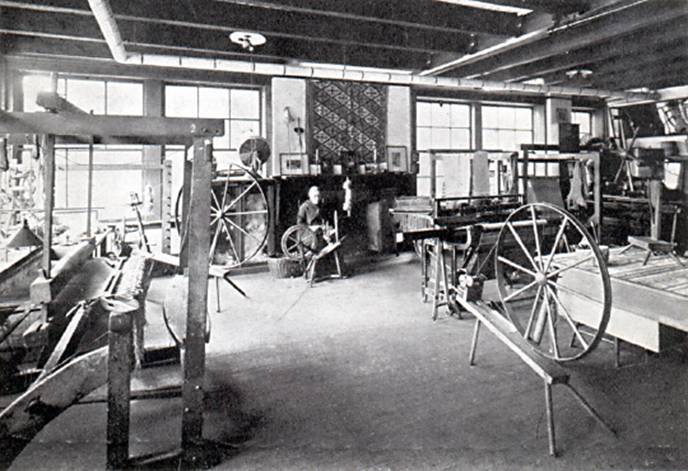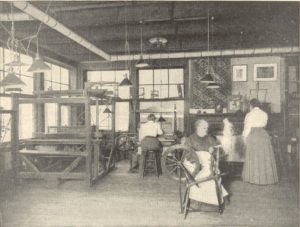This is the last in Sara Catherine Lichon’s series of blog posts about interesting characters that she came across while working as a co-operative education student for the Project this semester. Her work involves identifying and describing the over 5,000 unique individuals mentioned in Addams’ correspondence.
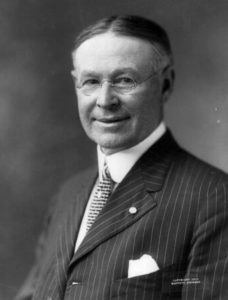
Life in law can often be exciting, especially when cases take a dramatic turn. For Francis Joseph Heney, a lawyer and politician from California, drama and excitement was part of the job — and sometimes his job even became a matter of life and death. Heney was known for many cases throughout his career, but he was most famous for killing an opposing plaintiff and for being shot in the head by a juror.
As a member of the National Committee of the Progressive Party, Heney’s name appeared numerous times in letters to and from Jane Addams that discussed the National Committee. Heney was a delegate to the Republican National Convention in 1912 and ran for U.S. Senator from California as a Progressive in 1914. Outside of politics, he was a lawyer in both Arizona and California, and owned a cattle business in Arizona with his brother. From 1893 to 1895 he was Attorney General of the Arizona Territory, and he also served as the U.S. District Attorney for the District of Oregon. Heney was a well-known lawyer, having worked as a prosecutor on famous cases such as the Oregon Land Fraud scandal, where U.S. government land grants were being obtained illegally by public officials, and the San Francisco gaft trials, where members of the San Francisco Board of Supervisors were prosecuted for corruption.
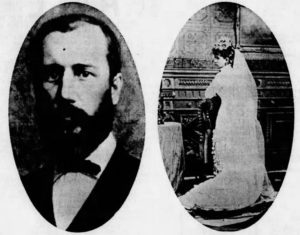
In 1889, Heney defended Mary Ann Page Handy, the abused wife of Dr. John Christopher Handy, in a divorce case. Handy was known for being violent and aggressive, having abused his wife throughout their marriage, threatening to kill her when she wanted to file for divorce, and causing her to become addicted to morphine. In July 1889, Handy filed for divorce himself and sent their children to live with his mother. Handy threatened to kill anyone who dared to defend Mary, scaring away most attorneys. Originally, C. W. Wright was to defend Mary, and he asked Heney to assist him. After Heney agreed, Wright withdrew from the case, and Heney decided to do the same. After some reconsideration, though, Heney decided to defend Mary, despite the anger of Handy.
Throughout the case, Handy threatened Heney numerous times, even trying to run him over with his buggy. Ultimately, Handy won the case and received custody of the children, which Heney was quick to appeal, and a new case soon started – and the threats continued. On September 24, 1891, Handy attacked Heney outside his office, grabbing his neck and pinning him to a wall. It’s here where there are different accounts of what happened next; some newspapers say Heney broke free, ran, and drew a revolver, which Handy tried to grab. During the struggle, Heney shot Handy in the abdomen. Other papers say Heney shot Handy while running from him. After the encounter, Handy was taken to Dr. George Goodfellow for an operation but died during the procedure. Heney surrendered to the police but was bailed out by three of his friends. In a hearing two days later, the court ruled Heney acted in self-defense and he wasn’t charged.
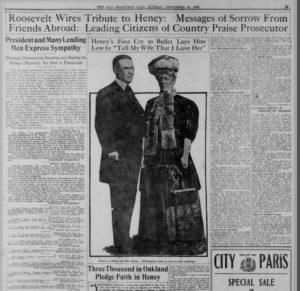
This was not the end of Heney’s exciting cases. During the San Francisco graft prosecution, Heney pointed out that one juror, Morris Haas, was ineligible to be a juror because he was an ex-convict. Heney also believed that Haas was planted by political boss Abe Ruef, who was being prosecuted by Heney at that time. Angered and resentful, Haas came into the courtroom a few weeks later while the trial was in recess and shot Heney in the head. Haas was then arrested, but found dead in his cell shortly after, leading some to believe he had been killed by one of Ruef’s gangsters. Others thought he committed suicide. Heney was expected to die, but he survived the attack. The newspapers of the time reveal how loved Heney was by the public; The San Francisco Call had an entire page dedicated to the story, describing how three thousand people gathered at Oakland’s town hall in support of Heney and how President Theodore Roosevelt sent Heney’s wife a telegram of sympathy.
Heney continued to be involved in law and politics after these incidents, and lived a fulfilling life. In 1906, he married Rebecca Wentworth McMullin. She died in 1911. Heney married to Edna I. Van Winckle in 1915, who managed his U.S. Senate campaign. Heney died in 1937.
Heney’s work with the Progressive Party and in law have gone down in history, especially the stories of his near-death encounters. And he is yet another fascinating person who has appeared in Jane Addams’ papers!
Sources:
Dexter Marshall. “Thrilling Chapters in Lives of Public Men.” The Washington Herald. April 19, 1908, p. 36.
“Hand to Hand.” Tombstone Epitaph. September 27, 1891.
C. Martin. “Territorial Divorce – as Turbulent as the Times.” Arizona Daily Star. November 12, 1972, p. 57.
Oliver Tatom, “Francis J. Heney (1859-1937),” The Oregon Encyclopedia.
“Roosevelt Wires Tribute to Heney: Messages of Sorrow from Friends Abroad: Leading Citizens of Country Praise Prosecutor.” The San Francisco Call. November 15, 1908, p. 23.
“When Francis J. Heney Shot His Man, Too.” The Des Moines Register. December 6, 1908, p. 10.
“Francis J. Heney,” Wikipedia.


